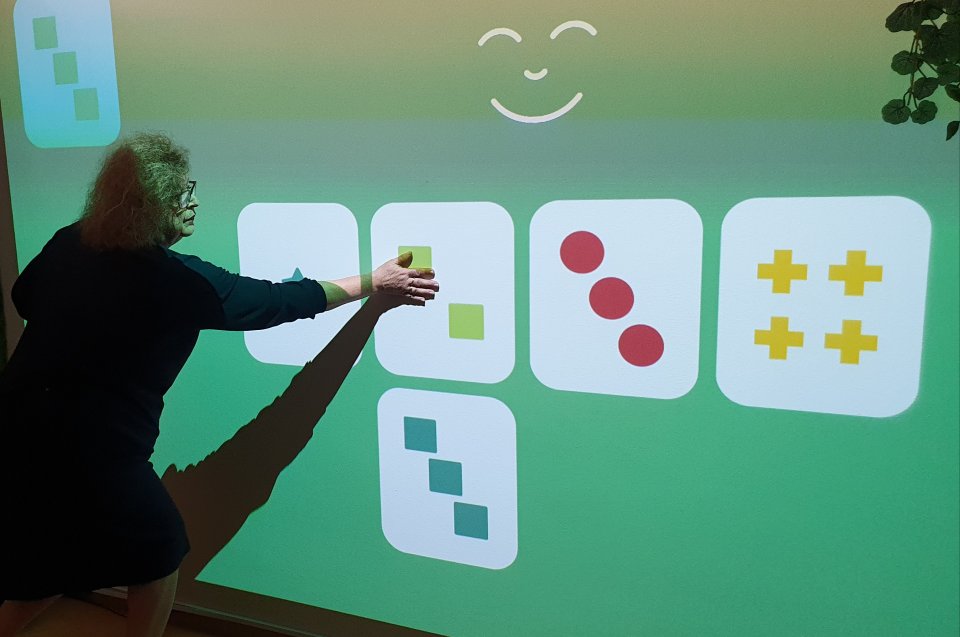
I remember a few years ago, in my previous unit, when I wanted to play music in YouTube to our clients, something from their youth in the war times. Also music videos of many songs aroused a lot of emotions. We had only a few desktop computers back then and I remember trying to gather as many clients as possible around the computer in the corridor. If we wanted to listen to music, we mainly used CDs, also in the daytime dancing parties.
New technological winds are blowing
Today, everything is different. We moved to the refurbished E block in Kustaankartano senior centre in 2017. That block has good facilities for modern technology. Various applications could be used in the TV sets in the dining room and living room, which helped us to pick up suitable music or to watch an open fire when the evening got darker.
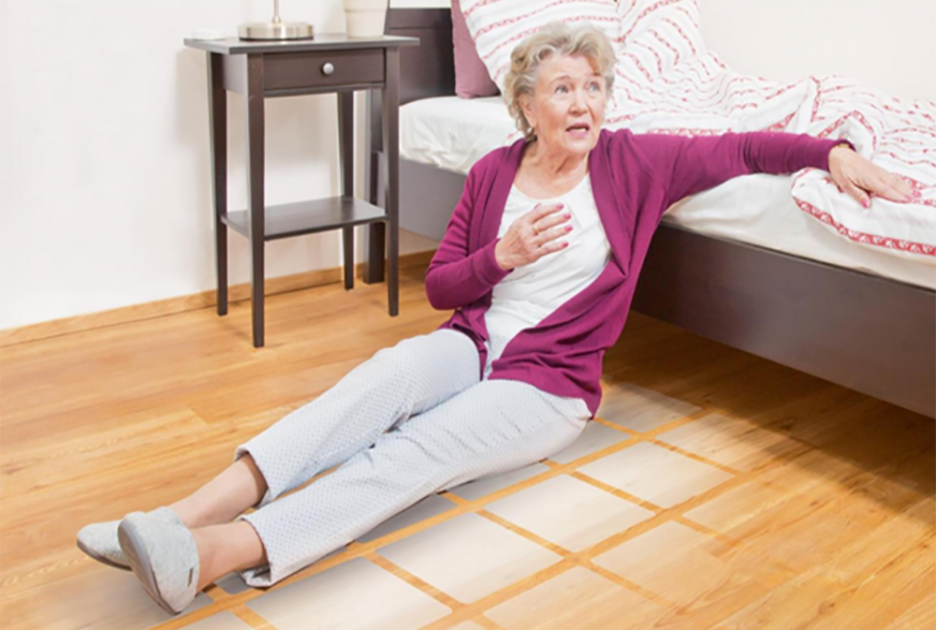
Added safety to the residents’ everyday life
The residents’ rooms have smart floors that can alert a staff member’s mobile phone (Elsi Smartcare Application) when the resident gets up/falls or when, for example, the resident has spent too much time in the bathroom and it’s a good idea to go and check what is going on (Elsi Smartfloor Maricare). In 2020, we received a smart lighting system for trial use, to the corridors of one floor (Interact Pro Signify) and to the residents’ rooms (Philips Hue). The lighting systems aim to save energy and offer personalized lighting solutions according to individual needs.
In the corridors, the lights have motion sensors, and in the smart lighting user trial we can dim the lights towards the evening. In the night time, the lights remain dim when switched on so it is easier to guide the wandering resident, suffering from a memory disorder, back to his or her room, as it is “night time”. Of course, if the situation so requires, the lights can also be fully switched on also in night time. With an individual lighting solution in the resident’s room, he or she may, according to the individual daily rhythm, have added light when it is time to wake up and less light when it is time to calm down and sleep. Some residents may sleep longer and it might be easier for them to wake up when the amount of light increases naturally in the room, and not all the lights are fully switched on immediately.
Our experiences on the smart lighting trial have been positive. The system has facilitated our everyday care work. We have three floors in our block, and one of them is now testing the smart lighting solution. Those who work at night have seen the biggest difference, compared to how it used to be.
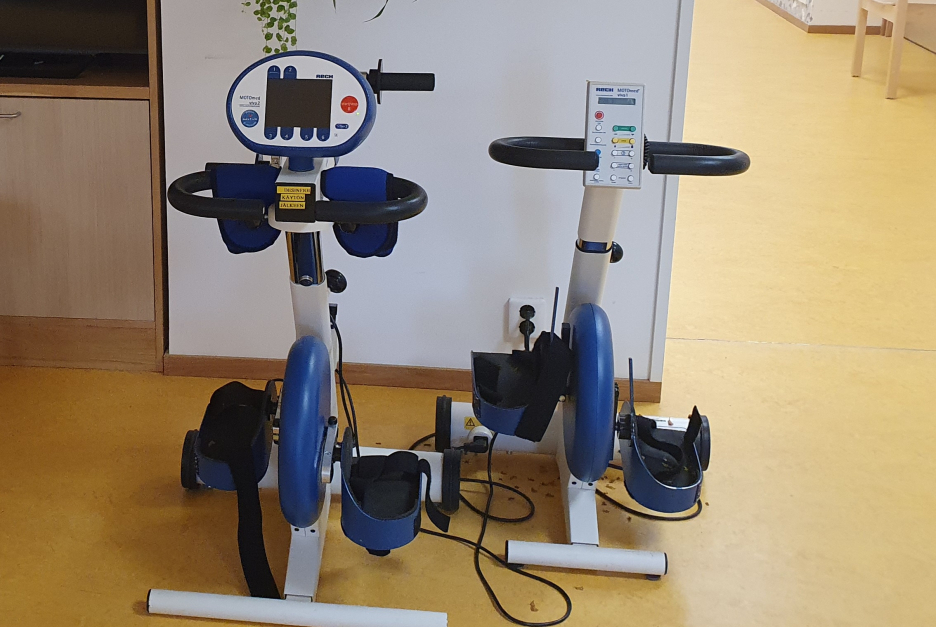
Motomed exercise training (only in Finnish) is included in our residents’ daily activities and it is also written in our exercise therapy plan. The client can pedal the Motomed fitness bike by using own muscle power and when needed the Haltija Group device can be used to add some motor assistance but the exercise is still beneficial. Exercising supports the mobility of limbs which, in turn, supports circulation.
Genano (only in Finnish) air purifier is located in one of the floors and we believe that it makes the indoor air quality better.
ILQO remotely managed, online access control system Arvolukko (only in Finnish) facilitates moving from one place to another, by allowing the door to be opened by just showing the key to the RFID reader. Individual access rights can be determined to every single key.
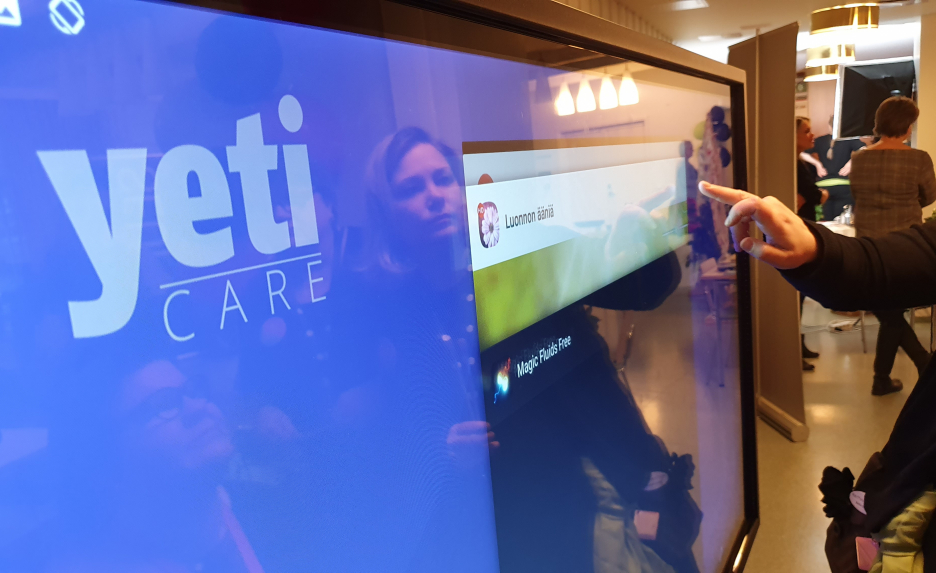
There are two Yeticare touch screen tablets (Kuori Oy) in Kustaankartano, for use in different blocks. This has been a very good experience as tablets are easily accessible to users in wheelchairs as well. The device can be adjusted higher or lower and it doesn’t fall down. Also the slope of the device can be adjusted, to make it easier to use from any type of chair. The device can easily be moved to different locations. The tablets have been popular in our unit but also in those blocks that don’t have a smart TV set. There are plenty of applications to choose from and if the client cannot, for example, raise a hand to touch the screen, a paintbrush can be used. We have listened a lot of music with the device and it’s also been very nice to use the big screen to watch an open fire or a beautiful scenery with some fitting background music.
E block’s multisensory experience room
We have a multisensory experience room in the second floor of the E block. Our clients have experienced wonderful things with the help of natural materials and sense-awakening objects. A restless client can be taken into the multisensory experience room and then choose, what to do there. The room is very suitable for organizing reminiscing groups, or just for sitting still and wait what the client wants to share. The room has an Oivalla experience wall (OiOi Collective Oy), with which the clients can watch nature videos on a touch screen wall, express themselves by painting or play different games. When watching nature videos, natural sounds come from the loudspeakers; the sound of running water or of a silent wintery forest. The experiences of the experience wall have been very positive and the clients have been able to choose what they want to do during the activity moment.
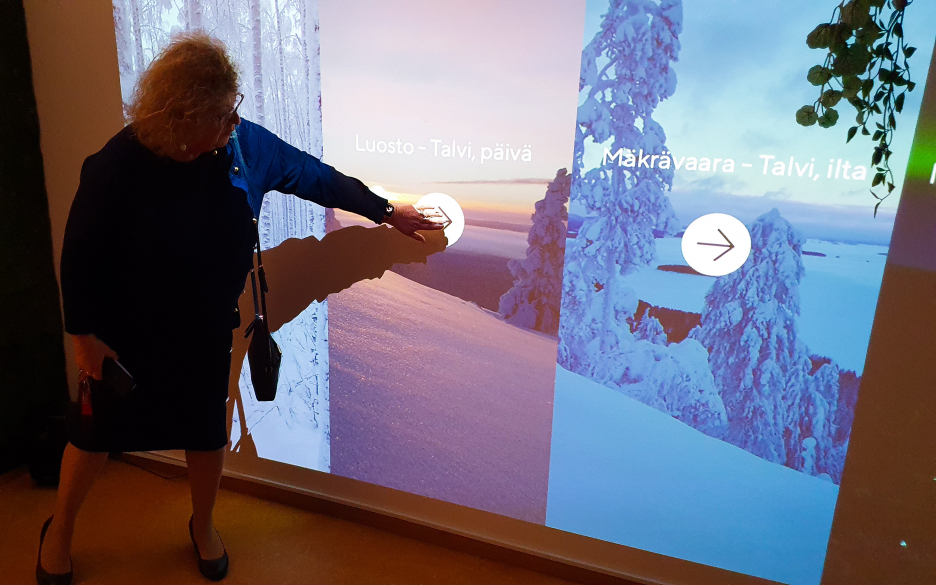
We also have Senopi VR headsets in the multisensory room. The technology was provided by Senopi Ag. We received two VR headsets to be steered by a tablet. VR headsets can be used to experience nature and sights. The videos are a few minutes long and the user can put them together to create a “trip”. By turning one’s head and body the user can look at every direction and feels to be present in that landscape. The instructor can see on the tablet what the user sees or wear the headset as well. The headsets can also be used with two clients at the same time.
Using the headset and the tablet was very use, after a few trial rounds. The clients and the staff could obtain refreshing nature experiences in their everyday life. The landscapes made the clients comment on what they had seen and the landscapes clearly activated memory areas in brain. This was a wonderful experience brought close. The clients thought that putting the VR headset on and taking it off was natural which was a positive surprise to us. VR experience could easily be part of the daily activities.
The City of Helsinki’s innovation company Helsinki Forum Virium, as the responsible body for the pilot projects, has been involved in the piloting of the multisensory experience room and the smart lighting solutions. The experience wall and the VR headset trial were part of the Co-created Health and Wellbeing project. In practice, Forum Virium is involved in smart cities projects were future urban solutions are tested, piloted and co-created.
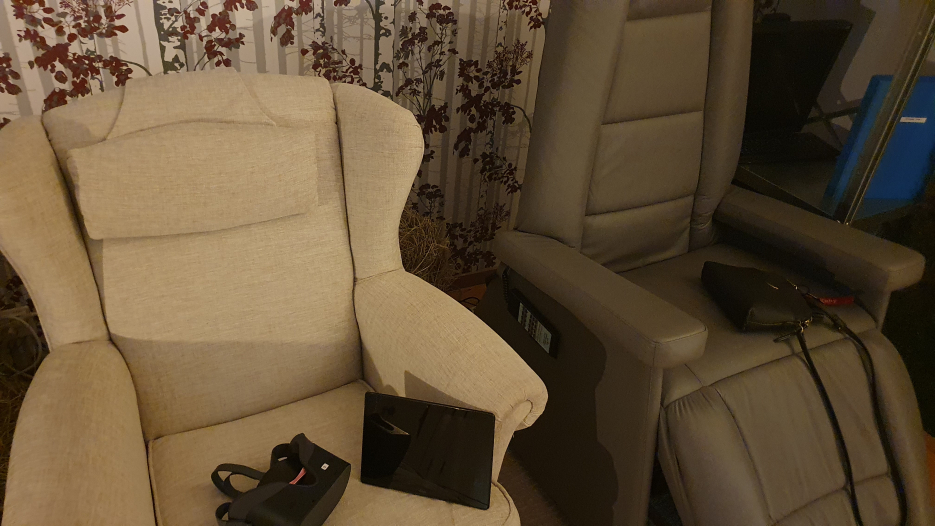
The multisensory experience room also has Next Wave Physio Acoustic Therapy system chair that relaxes the user with the help of sound vibrations. The user can choose between different programmes according to his or her needs. The client can also rest in a comfortable position.
Cooperation between different operators has been a really positive experience. When I heard about the trials I couldn’t even imagine that bringing this type of technology to our unit was possible, not even that something like that existed. By testing and trying new technological solutions you can understand their value in everyday care work. In my job, especially the multisensory experience room technology has worked very well as a “seize the moment” type of tool. This is the best way to work with clients with memory disorders because sometimes it’s difficult to have strict timetables for groups and activities with clients who have changing moods and alertness levels. A beautiful landscape in the sensory room can calm down a restless mind and after that we can focus on other tools as well.
WritersKirsi Weeman, B. Sc. in Social Services UAS, social instructor, Kustaankartano senior centre, service house Eeden, City of Helsinki



